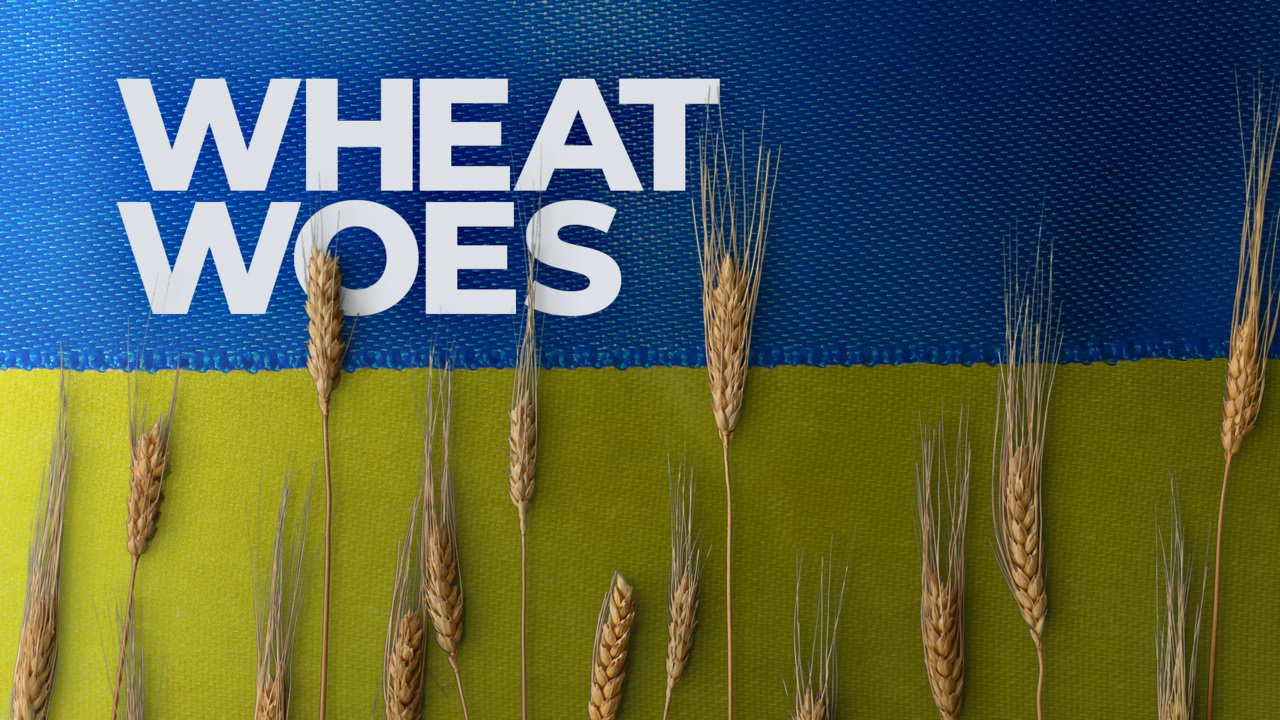
WHEAT IS A DIETARY STAPLE IN COUNTRIES ALL OVER THE WORLD, WHICH IS WHY THE WAR IN UKRAINE IS STIRRING FEARS OF A POSSIBLE FOOD SHORTAGE IN THE MONTHS AHEAD.
ROUGHLY 25% OF THE WORLD’S WHEAT EXPORTS COME FROM UKRAINE AND RUSSIA, AND ALMOST 50 COUNTRIES GET MORE THAN 30% OF THEIR WHEAT IMPORTS FROM UKRAINE AND RUSSIA
WHEN PUTIN INVADED UKRAINE IN FEBRUARY, THE IMPACT ON GLOBAL COMMODITY MARKETS WAS ALMOST IMMEDIATE. UKRAINE’S PORTS CLOSED, SHUTTING OFF PRODUCERS FROM GLOBAL MARKETS.
THE FIELDS WHERE UKRAINIAN FARMERS GROWS CROPS; THOSE ARE NOW BATTLEGROUNDS, SO FARMERS THERE AREN’T EXACTLY PLANTING LIKE NORMAL.
100’S OF ANTI-SHIP MINES FLOATING AROUND IN THE BLACK SEA ARE ALSO FORCING CARGO SHIPS TO STAY AWAY. EVEN IF THE WAR ENDED RIGHT THIS SECOND, IT WILL BE YEARS BEFORE UKRAINE’S FARM EXPORTS REACH GLOBAL MARKETS AGAIN.
AND NOW THAT RUSSIA IS ENJOYING A “PARIAH STATE” STATUS ON THE GLOBAL STAGE, MANY COMMODITY EXPORTERS ARE REFUSING TO DO BUSINESS WITH THE COUNTRY.
CHANDLER GOULE, THE EXECUTIVE DIRECTOR OF THE NATIONAL ASSOCIATION OF WHEAT GROWERS, SAYS WHEN YOU REMOVE TWO OF THE WORLD’S LARGEST WHEAT EXPORTERS FROM THE MARKET IMPACTS ARE INEVITABLE.
CHANDLER GOULE: when you have got Russia and Ukraine in a war, you are basically disrupting 1/3 of the world’s wheat exports. And so that is having a significant ripple effect not only here in the United States, but it’s really going to hit the middle eastern and northern African countries first, and then it’s eventually going to flow over here to the United States, and effect planting decisions due to the volatility it’s causing in our futures market.
SINCE MIDDLE EASTERN AND NORTH AFRICAN COUNTRIES RELY SO HEAVILY ON UKRAINIAN WHEAT TO FEED THEIR CITIZENS, DISRUPTIONS IN THOSE SUPPLY CHAINS COULD HAVE VIOLENT OUTCOMES. REMEMBER THE ARAB SPRING?
IN THE U.S., EVEN THOUGH WHEAT PRICES ARE AT RECORD HIGHS PRODUCERS AREN’T REAPING HUGE FINANCIAL BENEFITS. HIGH PRICES MIGHT EVEN BE DRIVING SOME BUYERS AWAY FOR FEAR OF NOT BEING ABLE TO TURN A PROFIT.
WHEN CONSIDERING THE VOLATILITY IN THE MARKET, GOULE SAYS MANY AMERICAN FARMERS MAY PLANT LESS WHEAT, NOT MORE. BUT THAT DOESN’T MEAN THE WORLD IS RUNNING OUT OF WHEAT. AT LEAST NOT YET.
GOULE SAYS THERE IS ENOUGH WHEAT CURRENTLY IN GLOBAL MARKETS TO MEET DEMAND FOR ABOUT FOUR TO FIVE MONTHS. BUT IF THE CONFLICT IN UKRAINE KEEPS DRAGGING ON, THE IMPACTS ON FUEL COSTS AND THE SUPPLY OF FERTILIZER WILL HAVE DISASTEROUS EFFECTS ON NOT JUST WHEAT BUT ALL SORTS OF CROPS ALL OVER THE GLOBE.






